This episode of LAB Radio was a part of our coverage of CryptoBlockcon where Chris Groshong interviewed Adam Koltun, Lead Business Strategist of Quantum Resistant Ledger (QRL).

Chris Groshong (left), CEO of CoinStructive Inc, and Adam Koltun (right), Lead Business Strategist of Quantum Resistant Ledger (QRL)
As Adam so eloquently put it in their recap blog post, the conference itself was a cornucopia of very different industries squished together in an expansive venue:
"The event was held at the Mandalay Bay Resort and Casino. In addition to CBC, the MLB Winter Meetings, and a National Finals Rodeo competition was being held nearby, so many of the competitors were staying at Mandalay Bay. Certainly, literal cowboys, baseball executives and blockchain enthusiasts rubbing shoulders made for some interesting juxtapositions. As much as those of us within the industry can sometimes get weary of terms like “adoption” or “mainstream” or “awareness” — moments like these serve as an eloquent reminder, to me, that blockchain/cryptocurrency are still completely unknown to large swaths of American society, at least. It’s useful, I find, to sometimes recognize that for all the drama this space can sometimes produce, that in the long-run, these are minor speedbumps that will be hardly (if at all) remembered by the vast majority of crypto users within the next 10 years."
As stated on their website:
"The Quantum Resistant Ledger (QRL) is a first of its kind, future-proof post quantum value store and decentralized communication layer which tackles the threat Quantum Computing will pose to cryptocurrencies.
This is backed by provably secure, peer-reviewed XMSS (instead of 256-bit ECDSA) with a proof-of-work(POW) algorithm, Cryptonight v7, which will later be hard forked to Proof of Stake."
QRL aims to future proof the Blockchain from Quantum computing through peer-reviewed and proven precursors like Extended Merkle Signature Scheme (EMSS):
"QRL provides a blockchain that is resistant to both conventional and quantum computing attacks. The future of the internet will be built on decentralized protocols and abstraction layers, and we plan on being ready for that future, as well as any sudden quantum computing development (“Y2Q”) that may usher in that reality sooner than expected.
Our blockchain will utilize the previously vetted, provably secure Extended Merkle Signature Scheme (XMSS) to ensure that our network is resistant to quantum computing attacks. We aim to secure our network against not only the inevitability of quantum computing, and all that implies for the blockchain and cryptocurrency space, but also the potential for a black swan event to rapidly and irreversibly advance the technology with no immediate warning.
By utilizing an address format that allows us to change hash functions down the line if necessary, we have created a blockchain that is both secure today and adaptable tomorrow."
For show notes and more visit: LAB Radio
On this LAB Radio, episode Aaron Mangal and Chris Groshong talk security, the Internet and origin story of how MetaCert helps protect users from malicious links with CEO and founder, Paul Walsh.
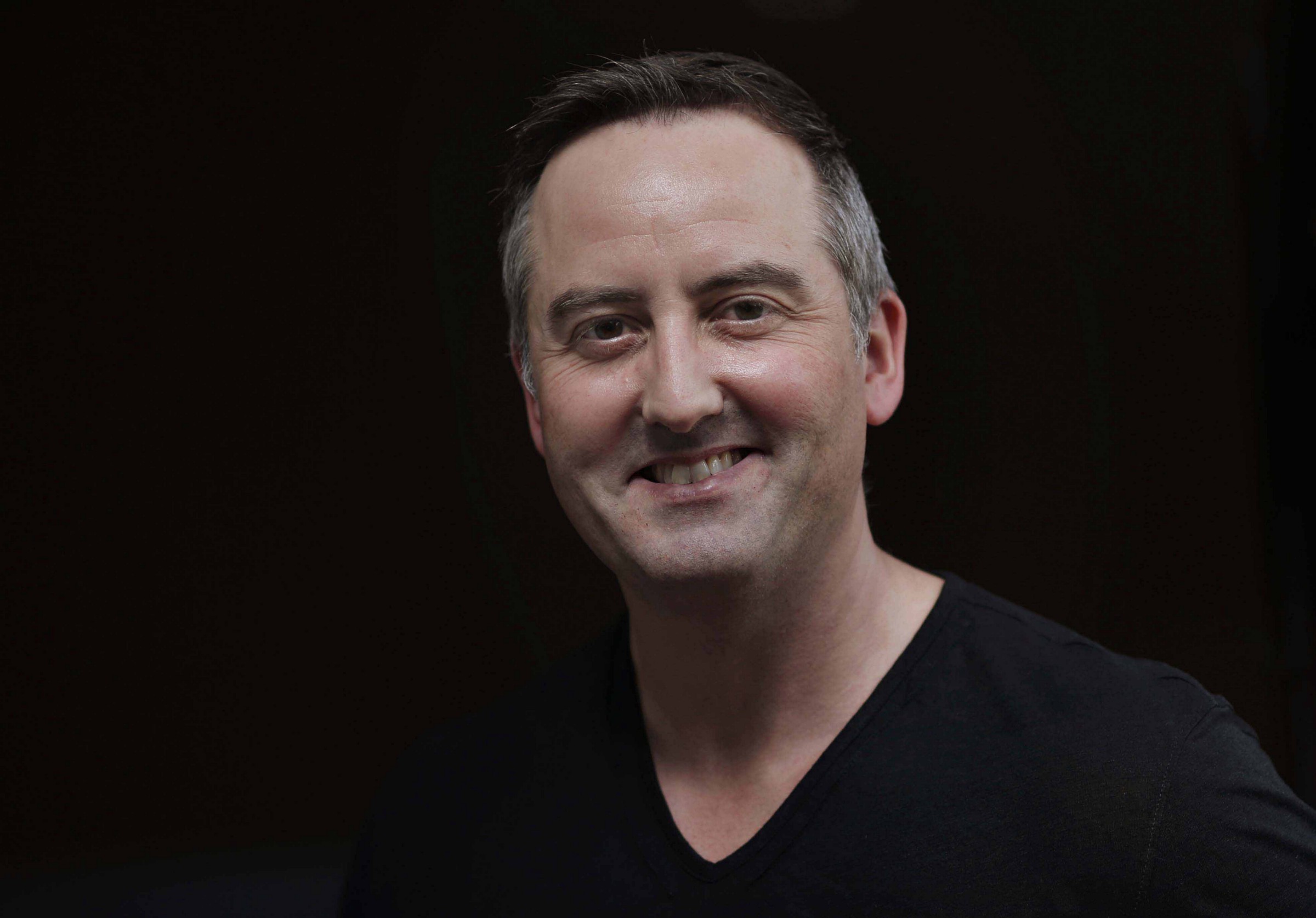
Paul Walsh, CEO and founder of MetaCert and co-founder of W3C Mobile Web Initiative
Paul is an early web pioneer in security and safety for users having helped create projects like the W3C Mobile Web Initiative who's mission includes "ensuring that the Web be available on as many kind of devices as possible".
He also helped create standards and classifications for Uniform Resource Locations (URLs) as a part of his work at the W3C organization.
"I'm CEO of MetaCert. In 2017 we completely eradicated phishing on Slack for the crypto world. In 2018 we pretty much brought a stop to phishing for the crypto world on Telegram. 2019 is going to be our most important year - our mission is to eradicate phishing for everyone who uses our new email security solution for native mobile email.
Previously...
I was part of the team that helped to launch technologies such as AIM, Internet Radio, Online Games and X2 56K Modem Protocol while working at AOL during the 90's.
I co-instigated the creation of the W3C Standard for URL Classification/Content Labeling and I'm one of the seven original Founders of the W3C Mobile Web Initiative. I also own a full patent for Malware and Phishing detection and prevention inside a mobile app WebView with more pending.
I own an Indian restaurant in Ireland - Michelin Star for 10+ years.
[I am a] Irish. Father. Wine Drinker. Advanced Open Water Diver, Snowboarder, Skydiver Wannabe and Seasoned Traveller."
-Paul Walsh
This new broad access of the web we are seeing today has brought new challenges such as malicious individuals who seek to steal peoples data and even worse Cryptocurrency and the value within.
The MetaCert team began by providing authenticity and monitoring of social media channels like Telegram and Slack which has a wave of malicious bot attacks on users, encouraging them to click on compromised links and put their sensitive data into fake websites which ultimately leads to theft.
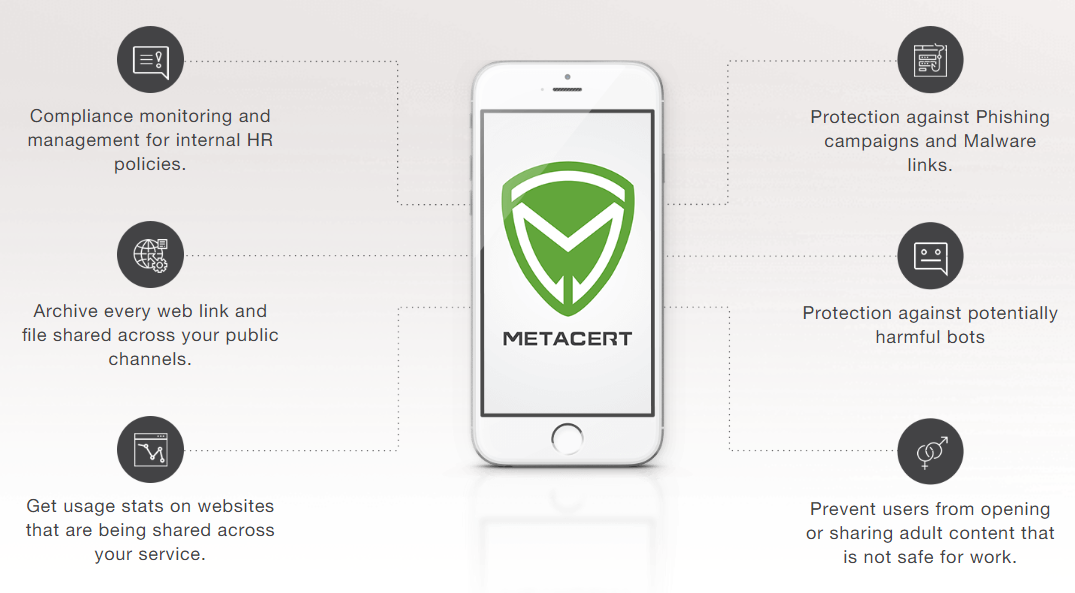
MetaCert aims to protect businesses from malicious threats and unsafe URLs inside Messaging Apps
MetaCert has a patented enterprise-grade security API which can lookup over 2,000 shortening services and check it against a massive database of 10 billion classified URLs across 65 categories in a fraction of a second.
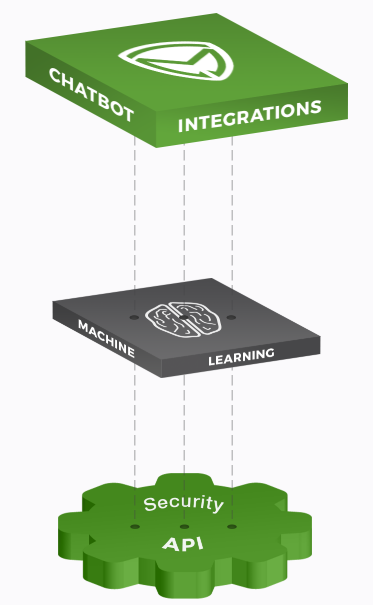
MetaCert boasts the biggest threat intelligence system on the planet. The second to them is OpenDNS (run by Cisco) which has classified 2 million domains across 60 categories.
One of the reasons for building its own threat intelligence system was to prevent false positives (which is a problem with current solutions on the market automatically blocking too many innocent sites).
MetaCert recently released a beta of their email security solution which helps verify the safety of links:

After listening to this episode you will learn:
- How Paul was an early semantic web pioneer in the 90s and created the W3C Mobile Web Initiative
- Why Paul felt websites and search engines should show more metadata and have an identity certificate
- What a Universal Resource Identifier (URI) is and why they are important
- How Webview works and was a vulnerability in our mobile use of the Web
- Why they got a patent in place for security around Webview to protect themselves from tech giants like Google
- Why the first iteration of MetaCert was for child safety and built a database for pornographic content
- How MetaCert saw the opportunity to organize and classify URIs and created the biggest Cyber Threat Intelligence Database to date
- How the MetaCert API works
- How MetaCert leverages a reward system for compensating people (Validators) for helping identify and log links
- Why the MetaCert "Green Shield" icon has become a pillar in their branding and marketing to the public
- Paul's vision for decentralizing governance around content, link filtering and working group/committee creation
- A fake news identifying browser add-on called TrustedNews which is 100% powered by MetaCert
- About how Paul is considering moving away from Ethereum (first time mentioned in public)
For show notes and more visit: LAB Radio Episode 49
On this LAB Radio, episode Aaron Mangal talks technology, Blockchain and BUIDLing with Barbara Bickham, founder of Trailyn Ventures and the International Blockchain Accelerator.
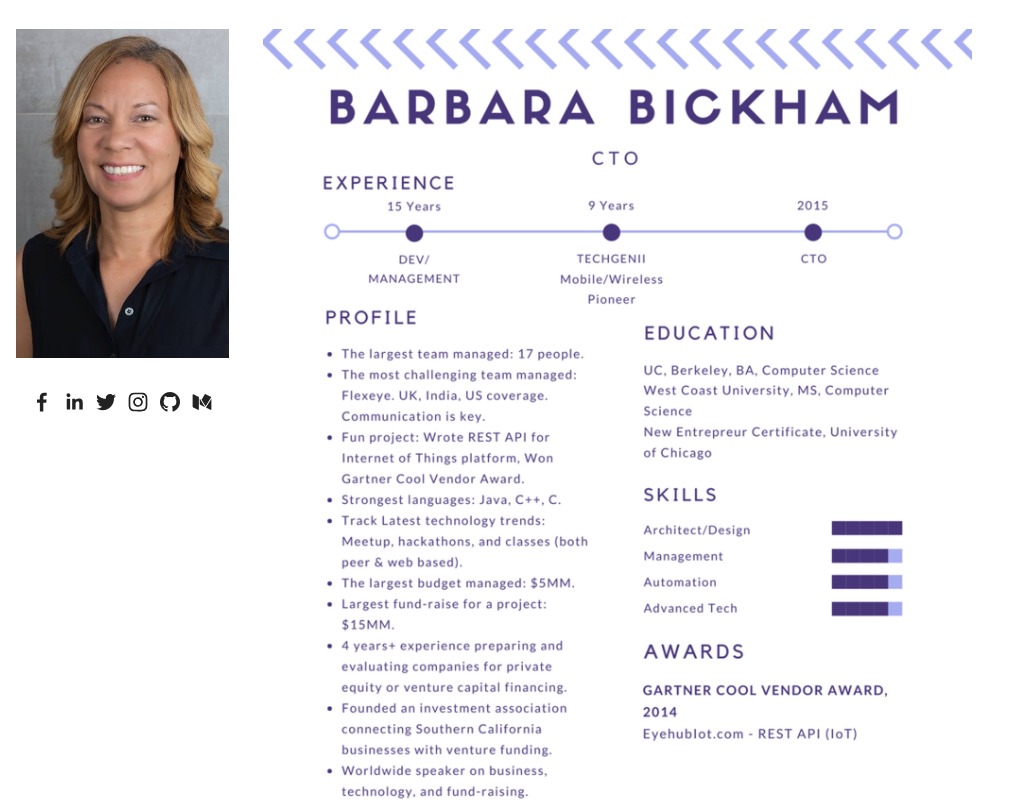
Barbara Bickham is a CTO, Investor and Entrepreneur and founder of the International Blockchain Accelerator
Barbara is a Berkley, University of Chicago Alumni, coder, CTO and Technology Advisor with extensive experience across industries like: FinTech, Fashion, Wearables, Wireless, Security, Media and Entertainment, Artificial Intelligence and Blockchain.
Her current areas of expertise are in Blockchain, Artificial Intelligence, Augmented Reality, and Internet of Things (IoT).
She even won an award from Gartner for her work writing a REST API for an IoT platform.
"I bridge the gap between professionals that speak in technology terms with professionals that speak primarily in financial terms. I represent a company to investors, key clients and strategic partners.
I also have over 4 years experience preparing and evaluating companies for private equity or venture capital financing. Founded an investment association connecting Southern California businesses with venture funding." -Barbara Bickham

The International Business Accelerator is a combination of private sector and non-profit entities' efforts:
"The International Business Accelerator is a joint program of the Community Vitalization Council, an economic development non-profit, and K5 Ventures, an early-stage venture fund that partners with and invests in technology-driven businesses led by visionary founders.The IBA was started in 2014 with support from the US Small Business Administration...
...In 2018 the IBA announced its first sector-specific accelerator cohort on Blockchain for Global Growth taking place at the University of Southern California's Marshall School of Business. In 2019 the IBA will announce new cohorts for more advanced tech, Global Fintech, Female-founders & Women-led companies, a partnership with Southern California's leading hardware accelerator and a Menlo Park cohort partnering with international legal and accounting firms in Silicon Valley."
After listening to this episode you will learn:
- How Barbara began as a coder and eventually CTO, investor, entrepreneur and advisor
- The Catalyst for Barbara to cross the worlds of Investing and Technology
- The emergence of Digital Coast and eventually Blockchain Beach in Socal
- What a CTO is a what role they play in a company
- About the Blockchain Accelerator being hosted at USC's Blackstone Launchpad
- What types of people are joining the accelerator and what they learn
- The most exciting things to Barbara about the Blockchain world
For show notes and more visit: https://coinstructive.com/ep48-blockchainaccelerator/
On this LAB Radio, episode Chris Groshong talks shop with Jeff Zhou, founder of TrustNote, a mineable public DAG ledger with a two-tier consensus mechanism. (Cryptographic Algorithms: BLAKE2, BIP32-Ed25519)
The architecture is designed for high concurrent transactions and confirmation times.
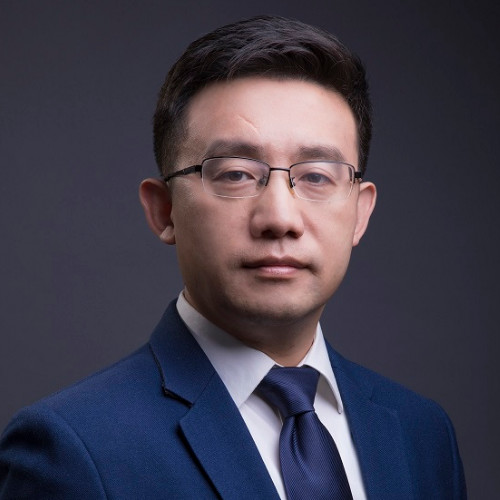
Jeff Zhou, Founder of TrustNote
Jeff's background began with chip making and eventually led him to realizing the lack of scalability with Bitcoin:
"A few years back Jeff Zhou started working on blockchain and at that time he developed BTC+LTC dual mining chips and hardware, the technology was sold to a world-wide market.Jeff then tried to develop an IoT software platform based on blockchain technology, and after several months of trial and development, he encountered serious issues with scalability and the transaction fees were very high. Issues like these prevent mass adoption of the blockchain technology and ultimately drove the foundation of the TrustNote open source project and its development of a fast, scalable, and light platform to provide high-performance for everyone on every device at a lower cost."
Now with TrustNote Jeff aims to create a new alternative architecture to the traditional Blockchain construct.
The TrustNote whitepaper elaborates on the details of the project and core architecture:
"Today’s blockchain technologies face many challenges such as network congestion, high transaction fees, and long delays in transaction confirmation. TrustNote seeks to address these problems by building the world-leading public Directed Acyclic Graph (DAG) ledger which is minable, capable of handling high concurrent transactions yet still maintain quick transaction confirmation."
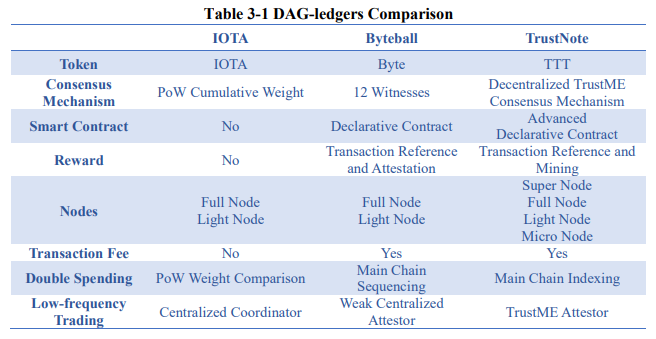
Above is a breakdown of how the TrustNote DAG compares with two other DAG focused projects, IOTA and Byteball.
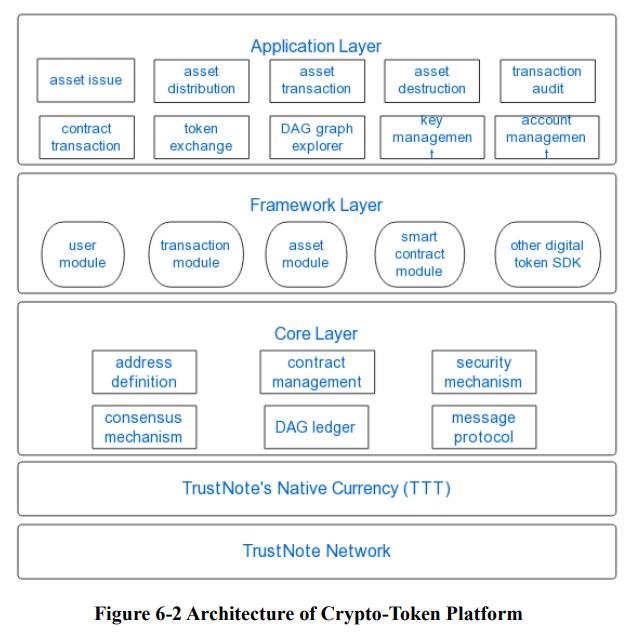
After listening to this episode you will learn:
- About how Jeff worked on secret projects for the Chinese Government before moving into the chip-making industry
- How they combined multiple algorithms into one chip (allowing multiple mining algorithms under one unit)
- Why Mining is big and concentrated in China
- Jeffs thoughts on China and how the worlds borders are opening up thanks to technology like Bitcoin
- What a DAG is and how they are using this technology as a Blockchain alternative
- Why Consensus is one of the biggest challenges to Blockchains
- Why they are aiming to solve this through a hybrid approach of architecture options
- What TrustNote is and how it works and when it's mainnet will be ready
- Why Jeff began with learning C languages (like C++) but also like other languages like Rust
For show notes and more please visit: LAB Radio
On this LAB Radio, episode Aaron Mangal chats with Kylan Hurt about the life as a developer at Edge wallet, a multi-currency wallet with baked in secure Single Sign-On (SSO) functionality.
We discuss how he became a developer, building a wallet, programming various code bases (like Javascript) and other topics from a dev's perspective.
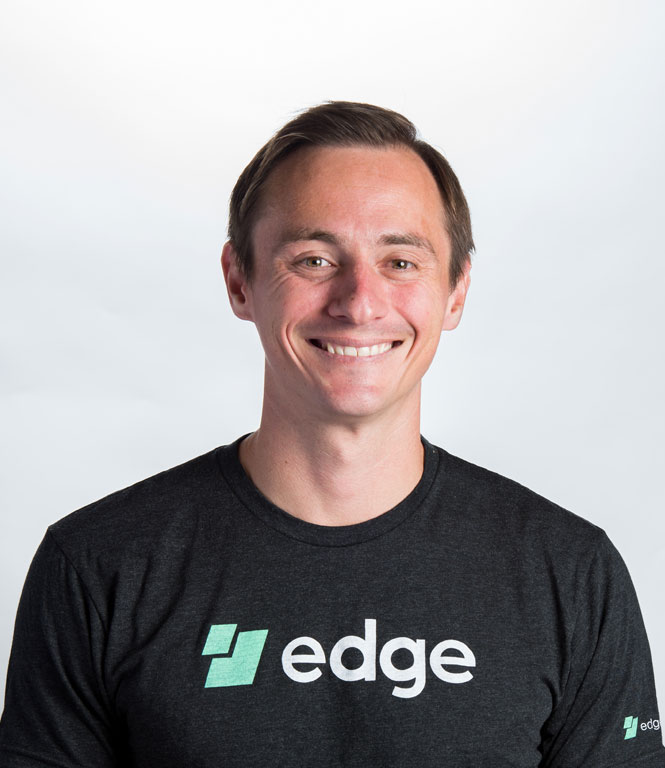
Kylan Hurt, Software Engineer at Edge
Kylan is a Software Engineer for Edge Wallet, a team that develops a multi-cryptocurrency wallet software and application. Kylan has worked with such organizations as Intuit, Z Global marketing, Knowledge City, Datagonia and Let's Talk Bitcoin.
He is also the organizer of the San Diego Blockchain Development Meetup and previously produced and hosted of The Captain Crypto Show, a discontinued cryptocurrency-related podcast.
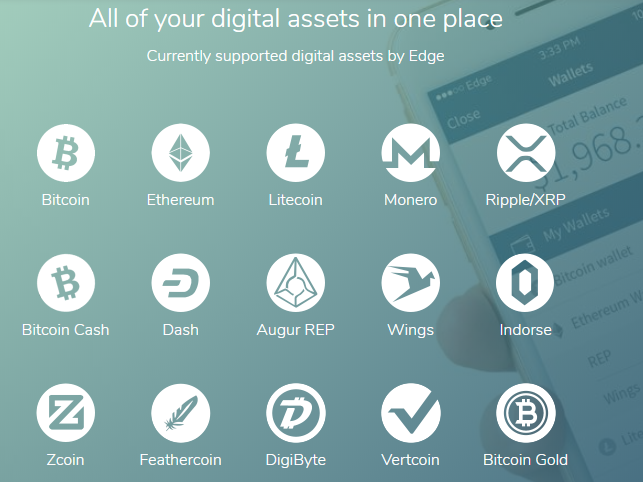
Edge, a multi-currency wallet with over 15 coins including BTC, ETH, XMR, XRP and more
Here is some lore about how Edge (formerly AirBitz) came to be from the company website:
Edge’s first product, a bitcoin wallet and business directory, was launched in the winter of 2014, under the company name of “AirBitz” and has been securing millions of dollars worth of bitcoin ever since. Like many others, Airbitz was inspired by the bitcoin revolution and set out from day one to build tools that kept bitcoin users safe and in control.
The Airbitz Bitcoin Wallet was the first application of a security model we coined as “Edge Security”. By the end of 2015, we had successfully packaged up the tools that make the Airbitz Wallet awesome into a software development kit (SDK) that developers could use for their own applications. Our “Edge Security” SDK has since been integrated into top-tier blockchain projects such as Augur, Wings, and OpenLedger.
Airbitz quickly advanced from a bitcoin wallet in 2014 to a paradigm shifting data security solution and multi-currency wallet in late 2017. Given our company’s evolution and coining of the term, “Edge Security”, we thought it would be best to highlight this focus as the core of our brand.
After listening to this episode you will learn:
- How Kylan self-started learning programming from a previously dissatisfying job
- The path he took to go from nothing to building an app (Edge wallet)
- Why Javascript is a more common language for front-end programming
- How you can do a lot of backend (server side) programming with Javascript
- Why other languages force you to configure your own server to write and deploy code
- What nodes are and why they are critical to decentralization
- How 0x works as a decentralized exchange protocol
- A day in the life of a developer at Edge
- How Edge eats their own dogfood through internal Cryptocurrency usage as a company
- Why development in the Blockchain space is bleeding edge and people should realize everything is a work in progress
For show notes and more visit: LAB Radio
On this LAB Radio, episode Chris Groshong chats with Will McDonough, founder of iCash which provides a Proof of Trust Protocol (PoT). This enables powerful use cases like smart contract validation, settlement and Blockchain insurance.

Will McDonough, founder of iCash
Will McDonough is an investor and entrepreneur whose storied career ranges from sports and entertainment management to the world of global finance. In 2014, McDonough led the Initial Public Offering for Atlas Mara (ATMA:LSE) with co-founder and former Barclays CEO Bob Diamond, for a market cap of $825 million after acquiring eight banks in Sub-Saharan Africa. Today, Atlas Mara has more than 3,500 employees and is operated by former executives of the World Bank, the International Finance Corporation (IFC), Barclays, Standard Chartered and Ecobank.
Prior to founding Atlas, McDonough and his team in the Investment Management Division of Goldman Sachs managed more than $17 billion in private capital of the firm’s current and retired partners. While at Goldman, he co-founded the Goldman Sachs Builders & Innovators Summit, an industry-leading conference bringing together the top 100 entrepreneurs in the world every year.
Prior to Goldman, McDonough partnered with New York-based Avenue Capital Group to co-found a $250 million distressed debt fund called Avenue Strategic Partners. Since 2001, he has run his own highly successful management company called MMG, which has represented the licensing and partnerships interests of many high-profile individuals, iconic brands, and venerable estates including The Estate of Nelson Mandela, New England Patriots Quarterback and Super Bowl MVP Tom Brady, and supermodel/activist Gisele Bundchen. MMG also co-founded a children’s entertainment company with Andy Heyward, Warren Buffett, Martha Stewart, Stan Lee and Arnold Schwarzenegger to build educational content for children.


iCash, a Proof of Trust (PoT) protocol assuring accurate data from Blockchain transactions
iCash’s is a Blockchain-agnostic Proof of Trust (PoT) protocol which provides distributed trust for data input. This means assuring data is accurate using this construct for services like validating smart contract settlements and Blockchain Insurance.
Just as courts and lawyers provide validate appeals processes for paper contracts, iCash’s PoT Delegates provide the same process for digital Smart Contracts.
While proof of stake and proof of work are certainly breakthrough tech, there is currently no system in place to assure users that the data inputs are accurate.

After listening to this episode you will learn:
- About Will's origin story and how he got started as a childhood entrepreneur
- How Will got into Boston College after initially being rejected
- Why he built a company with Tom Brady and represented such figures as Nelson Mandela financially
- What a special-purpose acquisition company (SPAC) is and the benefit of operating as one
- Creating a company ("fund of funds") that provided exclusive access to hedge fund managers that money couldn't buy
- How he developed relationships with JP Morgan, Morgan Stanley and Goldman Sachs
- Why settlement in Blockchain transactions are not always accurate and why that's a pain point for institutional traders
- What Proof of Trust (PoT) is and how it works?
- About iCash positioning as an independent third party insurance provider of Crypto (like buying it for your car)
- How iCash uses Delegates (third-party Oracles) which can be configured for public or private Blockchains
For show notes and more visit: LAB Radio
On this LAB Radio, episode Aaron Mangal discusses Blockchain Regulation and the legal side of things with Morvareed Salehpour.

Morvareed Salehpour, Attorney and Speaker
Morvareed Z. Salehpour specializes in handling a diverse range of complex legal matters both in and outside the courtroom. She is experienced in negotiating a variety of contracts and legal agreements and litigating cases from inception to trial and appeal. She has represented companies and individuals in a variety of industries, including blockchain, technology, entertainment, media, banking, manufacturing, real estate, fashion, retail, food and beverage, and healthcare, among others.
She has represented clients across the nation ranging from entrepreneurs and small businesses to Fortune 500 companies. Ms. Salehpour enthusiastically applies unique solutions to client needs, working hard to devote herself to efficient resolutions.
Ms. Salehpour earned a degree in Political Science, summa cum laude, from UCLA in 2007 and received her JD from the UCLA School of Law in 2010, where she also served as a Managing Editor for the UCLA Law Review. Ms. Salehpour previously practiced at BakerHostetler, a national firm where her work included being a member of the legal team seeking to recover the principal lost in the Madoff Ponzi scheme, and then at Strange & Butler, a complex litigation boutique.
She is admitted to the State Bar of California, is a member of the bars of the United States District Court for the Central, Northern, Southern, and Eastern Districts of California, and a member of the bar of the United States Court of Appeals for the Ninth Circuit.
Ms Salehpour is also active in the tech community and enjoys analyzing and discussing developing legal issues in that field, particularly with respect to the blockchain, artificial intelligence, virtual reality/augmented reality, and esports.
After listening to this episode you will learn:
- About Morvareed's background, where she's from and how she got started in the Law (Hint: Law and Order)
- How Morvareed decided to focus her legal services on Blockchain and Cryptocurrency technology
- The way she approached applying legal capabilities and the Law to Blockchain
- About the US-based case law system and how it affects the development of Regulation
- Why we have been through these cycles before with the Law but with other tech booms
- Key concepts including Jurisdiction, Liability, Enforcement, Crypto Asset Management, and Copyright Protection
- The dark side of Cryptocurrency and the Law
- Threats to Blockchain immutability
- About the uniform regulation of virtual-currency businesses act
For show notes and more please visit: LAB Radio Episode 44
On this LAB Radio, episode Aaron Mangal discusses creating rare digital art on the Blockchain as well as the myriad of platforms out there for artists. Our guest this week is Joe Chiappetta, cartoonist, comic book author and artist.
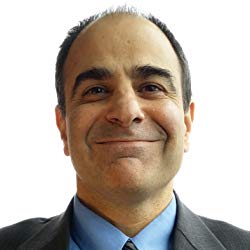
Joe Chiappetta, Author, Cartoonist, Blockchain Art Creator
Joe Chiappetta has been involved in cartooning and publishing since the mid-1980s, creating comics and art that reflect something positive about life. As an author, Chiappetta has won many awards, including an Illinois Arts Council Award for his work on the book "Back Pain Avenger." This volume, its research, and the speaking tour surrounding it focused on issues of disability in the history of comic books, as well as presenting a non-medicated memoir of rehabilitation. For his family documentary work on the graphic novel "Silly Daddy," Joe was also the recipient of the Xeric Award as well as numerous other award nominations over the years.

Rare Silly Chain from Joe's Blockchain Art Card Collection Called CrystalsCraft
While widely known for his award-winning work on Silly Daddy Comics, Joe has also been a prolific cartoonist creating comics about cryptocurrency and blockchain since 2015. He exhibited twelve blockchain comics at the 2018 Ethereal Summit in New York City and was the only cartoonist selected for this event to create live interpretive comics covering the show.
As the author of numerous articles about rare digital art, and an early adopter in this field as well as on crypto-social networks, Joe has educated and encouraged thousands of professionals, including artists and collectors, to pay close attention to the rising opportunities that cryptocurrency has opened up for the art industry.
After listening to this episode you will learn:
- Joe's Background and how he got into making art
- How the old system of collectables works (Creating, selling and distributing the works)
- What makes something rare, valuable and collectable
- How Joe sees the opportunity to transition into digital collectables
- The story behind Joe's rare digital artwork
- How does Cryptocurrency open new opportunities for Cartoonists and Collectors
- About Spells of Genesis and their "Blockchanization" in gaming
- Applications in the Cryptocurrency art realm Joe is excited about
- Book of Orbs, a platform for buying/selling and storing digital art
- Platforms Joe likes including Steemit and Ono
For show notes and more visit: LAB Radio
On this LAB Radio, episode Aaron Mangal discusses Spark, a web and mobile payments platform and decentralized exchange (DEX) powered by Graphene and built on BitShares.
Maxine Ryan, Spark's Chief Operations Officer, discusses the platform and a variety of concepts including the components of a DEX and the process of moving from Spark from Bitcoin to BitShares.

Maxine Ryan, COO and co-founder of Spark
Maxine Ryan is a Hong Kong-based entrepreneur who is passionate about the freedom of financial services for people. In 2014, she co-founded Bitspark, the world's first cash in, cash out blockchain money transfer platform for Money Transfer Operators which helps business owners send money better via cryptocurrency solutions worldwide.
The company in 2017 launched its ICO, $ZEPH, a rewards token for Bitspark's 180+ pegged cryptocurrency network whereby users of networks are incentivised via rewards and the company contributes buybacks to the market via its profits. Maxine frequently speaks at tech and finance events, can be seen on BloombergLive and was selected for Forbes 30 Under 30, 2018. Twitter : @MaxieRyan @BitsparksLtd #Bitshares #Decentralisation #RealSolutions
As stated on their website:
Bitspark, a Hong Kong based fintech company provides Spark, a secure web and mobile platform for money transfer operators [MTO] to send and receive payments quicker and cheaper utilising blockchain technology in addition to a suite of compliance and analytics tools tailored for the MTO industry.
In November 2014 Bitspark conducted the world’s first cash-in cash-out remittance transaction using Bitcoin and has since refined and targeted their services towards money transfer operators.
Bitspark has in recent years expanded to over seven countries in the Asia Pacific and African regions including Hong Kong, Malaysia, Ghana, Nigeria, Philippines, Indonesia, Vietnam and Pakistan and has formed a number of important partnerships and gained recognition at home and internationally. Bitspark has a history of excellent support from many notable organisations.
Bitspark is an alumni of the Cyberport Incubation Program in 2014 backed by the Hong Kong government, in 2015 was selected for the Accenture Fintech Innovation Lab APAC, in 2016 selected for the SixThirty Fintech accelerator USA and in 2017 was selected by the United Nations Development Program for financial inclusion projects in Tajikistan. In the financial space, Bitspark has been recognised by Goldman Sachs, Citibank, KPMG and Nikkei and has received coverage by noted publications like Forbes, SCMP, RT News, New York Times, The Australian, Coindesk and many more.
We discuss network effects and building technology that can be used across the Blockchain universe.
Thanks for checking out LAB Radio!
After listening to this episode you will learn:
- How Maxine got started in her career and eventually into Blockchains
- The state of the Blockchain market an industry in 2014
- Why Spark (BitSpark at the time) shifted from Bitcoin to the BitShares Blockchain
- About how Spark is bankless, using full Crypto for all of their business
- The SparkDEX, what it is and how it works on BitShares
- Core models of Spark's business
- How Spark wants to create an open ecosystem for the money transfer space
- The 3 components of a DEX: fund management, order books and crypto transaction
- How the Sendy App works to facilitate cash-in and cash-out transaction in person leveraging Spark
For show notes and more please visit: LAB Radio
On this LAB Radio, episode Aaron Mangal discuss Blockdaemon, a three-click Blockchain node deployment and cloud platform with Konstantin Richter, the CEO and founder. Konstantin is a technology Entrepreneur in the Telecom, SaaS, and the B2B space.
Prior to becoming an entrepreneur, he was an executive at Deutsche Telekom and Nokia in software/services strategy and business development. He is also fluent in 4 languages.
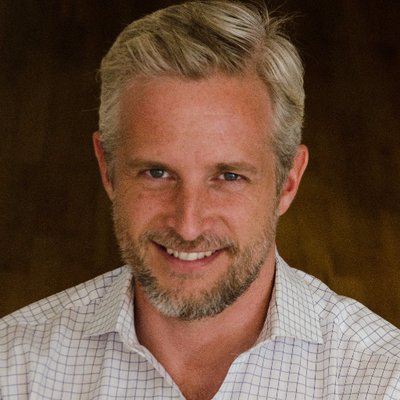
Konstantin Richter, CEO and founder of Blockdaemon
Blockdaemon is a node deployment tool that allows you to launch your node on a public blockchain network or join a private network in three clicks.
To maintain decentralization, Blockdaemon partners with multiple cloud providers, including AWS, Digital Ocean, and Google Cloud Services.
With Blockdaemon you can customize an existing protocol, supply your genesis block, choose the regions you want and how many nodes you need.
Current Blockchains supported include Bitcoin, Ethereum, Stellar and AION
We discuss network effects and building technology that can be used across multiple Blockchain universes.
Thanks for listening to LAB Radio!
After listening to this episode you will learn:
- How Konstantin got his start through telecom and consulting
- The power of network effects Konstantin observed and how he sought to leverage that construct in his companies
- About the crossover between network effects and the Blockchain
- Previous experiences including helping structure the business and strategy for Gem
- How his previous consulting experiences led him to think strategically about systems
- The benefits of Nodes-as-a-service which allows users to pool resources and gain economies of scale
- Why the goal has been to provide self-provisioning 3-click deployment of nodes for Cryptos like Bitcoin and Stellar
- Their developer first focus in term of the tools and services they provide
For show notes and more please visit: LAB Radio
In this episode of LAB Radio, Chris Groshong and Aaron Mangal discuss the NEO Global Capital fund, investing in Asia, emerging markets and the Blockchain.
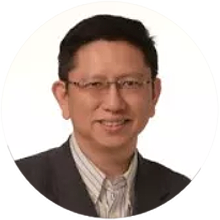
Roger Lim, Partner at NEO Global Capital
Roger is an experienced angel and blockchain investor, entrepreneur and technologist. He previously founded Webvisions, a managed cloud hosting company which he sold to a private equity firm.
He is an advisor for Bluzelle, Qlink, CoinFi, Selfkey, TheKey, Tomocoin, 0Chain, nOS, Open Platform. Roger is now a founding partner of NEO Global Capital.

Tony Gu, Partner at NEO Global Capital
Tony is an experienced Mergers and Acquisition (M&A) professional and blockchain investor. Tony is a founding partner at NEO Global Capital (NGC) and is a partner of Rhodium Capital and Longstand Capital.
He has done deals in Financial Services, Consumer, Health Care and TMT sectors, with total transaction value exceeding $1 Billion.
We discuss investing in Asia, emerging markets, preserving wealth and the NEO Global Capital fund.
After listening to this episode you will learn:
- How Roger and Tony met each other and began investing together
- The structure and focus of the two NEO Global Capital funds they manage
- Key initiatives and project categories that investment occurs in
- Emerging markets that they see activity and investment in
- The things that are most exciting to Roger and Tony
- Why Networking, building trust and opening doors for others is so important
- How NGC focuses on not just investing in firms but adding value
- The challenges around finding and retaining talent
- Strategies and tactics to consider when looking at markets
For show notes and more please visit: LAB Radio
In this episode of LAB Radio, Aaron Mangal discusses the Bitshares ecosystem, the Graphene engine that underlies it and algorithms like Delegated Proof of Stake (DPOS) with Kevin Messerly. Graphene was originally designed by Daniel Larimer who also founded Steemit and EOS.

Kevin Messerly, Proxy and DEXBot Team Manager
"I have six years experience as a cryptocurrency investor and advocate. Additionally, I have four years experience as a sales executive/account manager with a track record of high performance and strong work ethics. On top of that I have over fourteen years experience as an intelligence analyst for the United States Army and Department of Defense. I have successfully operated in high stress environments, requiring 13 hour shifts, six or seven days a week, throughout four deployments in Southwest Asia, South-Central Asia, and Africa for a total of 49 months."
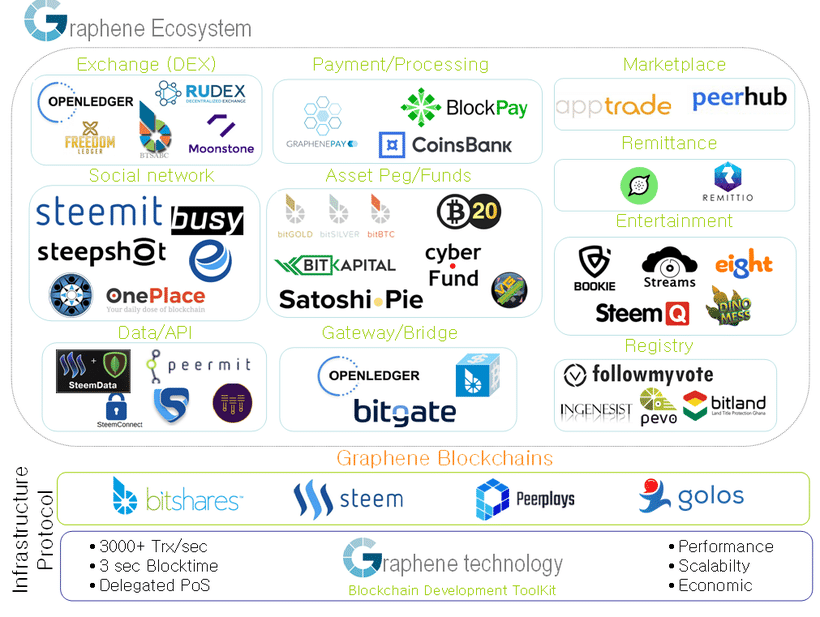
Graphene is the underlying technology that underlies BitShares and several other Cryptocurrency projects like Steemit and EOS. Graphene is an open source C++ blockchain implementation, which acts as a consensus mechanism.
BitShares also has the ability to issued market pegged assets which are tied with real-time real world prices.
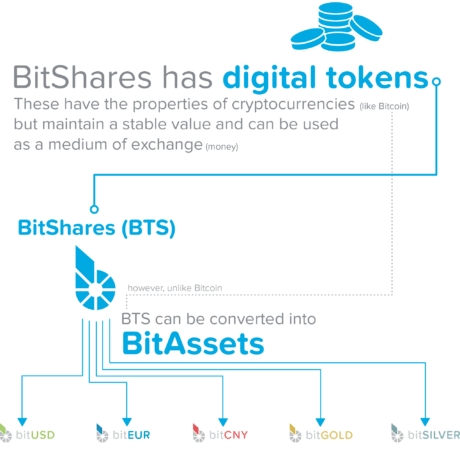
The BitShares market pegged BitAssets system
Ultimately, BitShares operates more as an equity rather than a purist “currency” since BTS tokens are used as collateral for a variety of decentralized financial services like decentralized exchanges, banking, derivative creation (of market pegged “bitAssets”) and currency rails.
Thanks for checking out LAB Radio.
After listening to this episode you will learn:
- Kevin's origin story and how he first discovered Cryptocurrency in 2011
- Why BitShares, in particular, caught Kevin's eye
- How BitShares leverages a suite of services including a DEX, bank and even user issued assets (UIA)
- About BitShares and how it had the first stable coin and market pegged assets (MPA) system
- The construct of Witnesses who process transactions and maintain price feeds
- The concept of decentralized banking and how you can borrow against your BitShares as collateral
- How Black swan events and collateral are handled by the system
- The risk and challenges of growing an ecosystem like BitShares
- The benefits of Decentralized Exchanges (DEXs)
For show notes and more please visit: LAB Radio
In this episode of LAB Radio, Aaron Mangal discusses Interactive and Tokenized Television with Gavin Douglas, CEO and co-founder of iPowow.
"Our early vision was conceived on a surf beach in Australia, ‘… to give millions of television viewers the power to interact with their favorite TV show and to affect the story, second by second’.
Since then we’ve been expanding around the world, transforming tens of thousands of hours of live TV, taped TV and live stream shows into exciting participation experiences. We’re a team of TV thinkers, creators and doers with a passion for Participation TV and we firmly believe that telling great stories leads to great ratings.
By moving iPowow onto the blockchain and making use of the best technology available, we can tokenize and monetize viewer engagement to provide better rewards for viewers and valuable data insights to networks, shows, and brands. So basically, instead of earning points, which have limited value, viewers earn HIT tokens just for watching content and more HITs for actively participating in contests, polls, and campaigns. After accumulating a certain amount of HITs, a viewer can visit our digital shopping plaza and exchange them for either digital or real-world products offered by our TV Network and Brand partners."
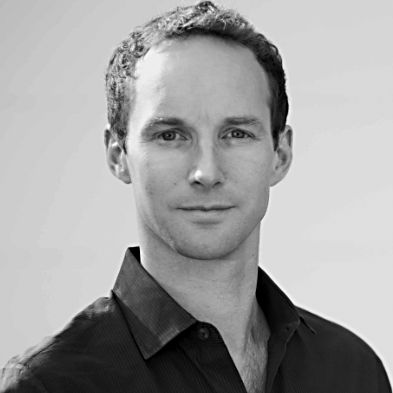
Gavin Douglas, CEO and Co-Founder of iPowow
Gavin is a multi-award winning media producer and TV format developer with over 20 years of experience. As the CEO of iPowow, Gavin has driven the business deals and the production of over 100 broadcast television + streaming video projects that link linear storytelling with real-time interactive technology, offering a unique perspective important to bridging blockchain technology and the media ecosystem.
Gavin has overseen iPowow’s growth across both linear television and streaming video by negotiating and signing production deals with clients including ESPN, NBC, ABC, Fox Sports, CNBC, CNN, Red Bull, Discovery and Disney. Prior to iPowow, Gavin had written, produced, directed or edited more than 30 television series around the world, including “BBC Top Gear,” “MasterChef,” “So You Think You Can Dance,” “Big Brother” and “MythBusters.”
iPowow which led to the creation of the HIT protocol allows viewership to be tokenized, meaning viewers can be paid to watch content. This also brings with it a whole new level of data as this viewership can be correlated with buying habits.
After listening to this episode you will learn:
- About Gavin's background in Television and analog approaches to audience interaction
- The genesis of iPowow and pitching their interactive tech to NBC, ABC, CNN, ESPN and FOX Sports
- How they have always focused on the viewing experience and aim to keep viewers excited about the show
- The key technological catalysts for the evolution of TV from "stuck the wall" 20 years ago to today's on-demand world
- Why the fact that everyone can consume content on any device anytime is a huge business opportunity for everyone
- How viewers are incentivized to watch shows through HIT tokens
- The vast treasure trove of data available behind these tokens and the associated viewing and purchasing habits
- Why we should always be on the lookout for the next technology and how to put those pieces together
For show notes and more visit: LAB Radio
Thanks for listening to LAB Radio.

In this episode of LAB Radio, Aaron Mangal discusses Spl.yt, a decentralized marketplace protocol, with CEO and founder Cyrus Taghehchian.
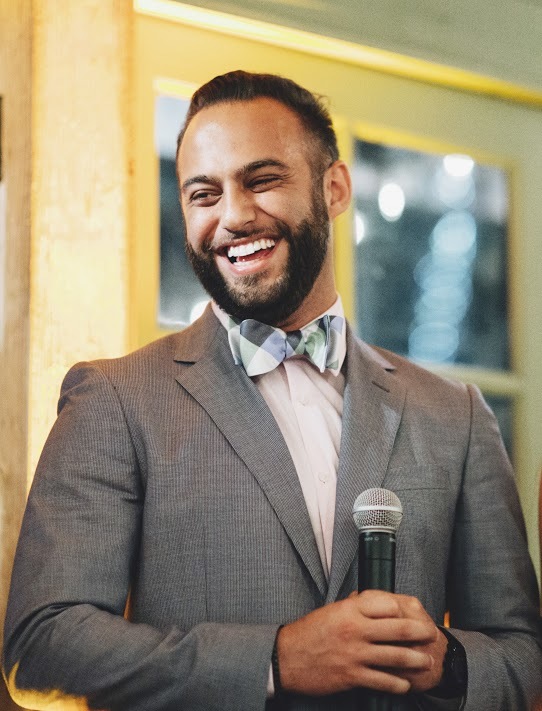
Cyrus Taghehchian, CEO and Founder at Spl.yt
Cyrus Taghehchian is the co-founder and CEO of Spl.yt, a decentralized marketplace protocol. Cyrus, a Deloitte Consulting alum, is a world-class consultant, co-active coach and Lean-Agile thought leader who has helped C-level and executives improve their organizations’ product management processes, development practices, and team culture at companies such as Intel, Bank of America, Paypal, and more.
A serial entrepreneur at heart, Cyrus specializes in technology strategy and implementations in the e-commerce and digital marketing space, including leading his previous companies through product and market fit phases.
Cyrus entered the blockchain space in 2015, having taken several notable active involvements, collaboration and advisory roles within the blockchain community where he applies his unique business development perspective, to promote blockchain and distributed ledger technology.
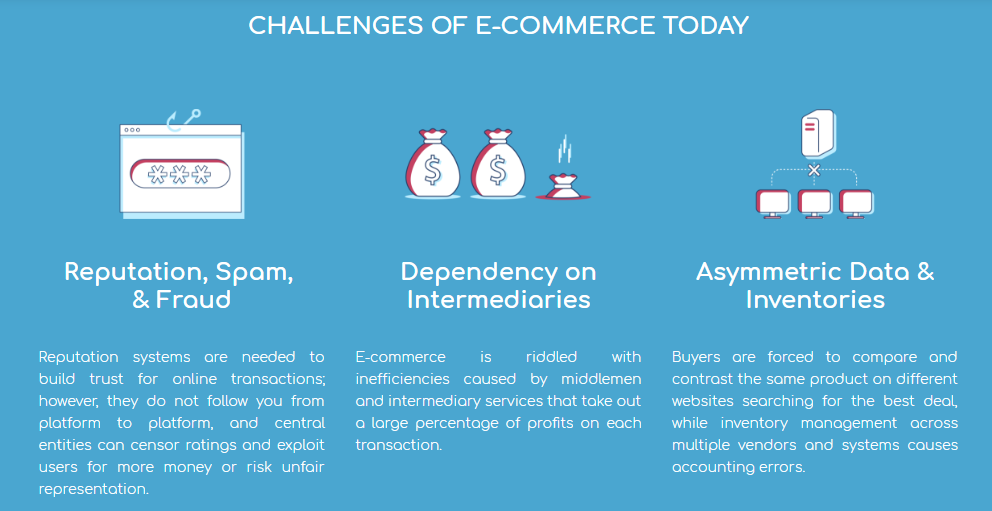
Spl.yt, a Decentralized E-commerce Protocol for a Global Inventory and Affiliate Network
According to the Spl.yt litepaper: “Spl.yt provides the market reach of Alibaba and CJ Affiliate, with the assurance of
Amazon, at the no-cost prices of Craigslist”
This is based on their global inventory and logistics system which allows retailers to connect with several marketplaces, not just one, which greatly reduces the labor and management behind multiple postings.
It goes on to further explain how retailers can connect with their platform: Spl.yt’s core function begins when an online retailer connects our easy-to-use SDK to load its inventory onto the blockchain. Once on the blockchain, Spl.yt’s smart contract grants access to all other participating marketplaces...Spl.yt uses token economics to promote fair and reliable participant
behaviors. Spl.yt’s global reputation system provides peace of mind that reviews and ratings (necessary for buyers to trust retailers) are performed fairly without censorship or manipulation, and reflect behavior across the internet (rather than one website).
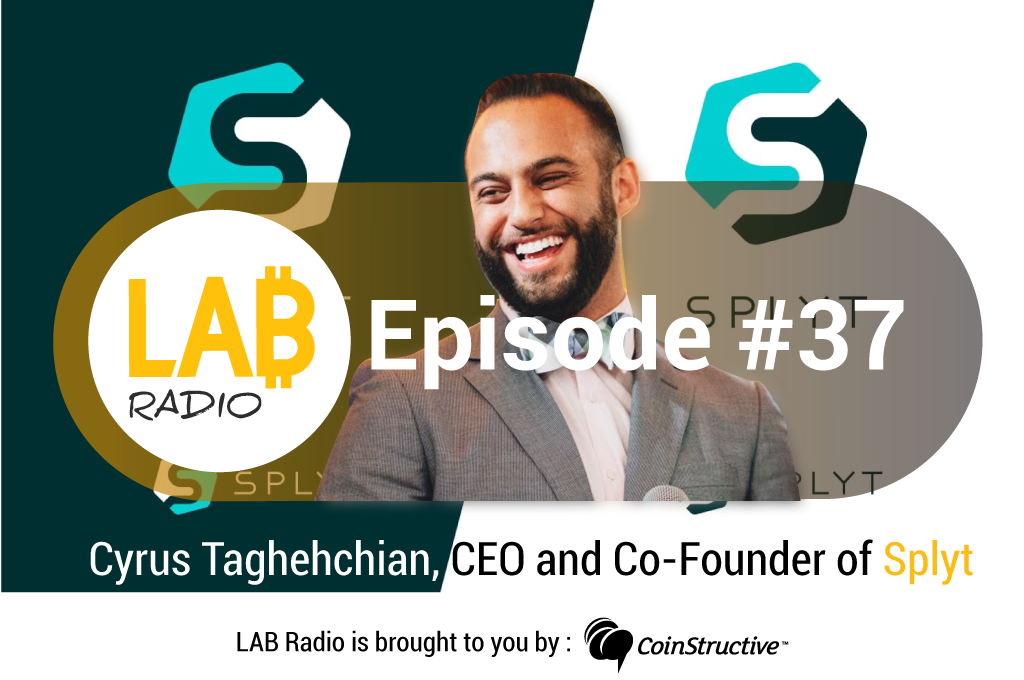
How Splyt Connects Buyers and Sellers
Splyt also have a dispute resolution to take care of any kind of problem that arises from transactions through intermediaries called Validators. These are real people that help figure out any issues whether on the buyer or seller side.
Finally, through an affiliate system sellers can leverage an automated way to manage and pay out commissions to affiliate for helping to sell products.
After listening to this episode you will learn:
- About the origin story of how Cyrus went from Consulting into the Blockchain world
- How consultants think, work and create value for clients
- Why great consultants replace themselves in the long-term
- Why people are a super important often overlooked part of building a successful company
- What Splyt is and how it works as a protocol
- The way that Splyt increases the reach of a posting across several major marketplaces
- A unique affiliate system that incentivizes anyone helping sell any product in the marketplace
- How Sellers can download the Splyt SDK and access a global database of inventory
- About Decentralized Autonomous Initial Coin Offerings (DAICOs) and one called HAIKU that Splyt is building
- The Affiliate system behind Splyt and how it evolves the current Affiliate model
- How Splyt handles dispute resolutions
For show notes and more please visit: LAB Radio Episode 37
In this episode, Aaron Mangal discusses the Coinigy platform with Derek Urben, CFO of Coinigy, headquartered in Milwaukee, Wisconsin. Coinigy is a cross-exchange charting, portfolio management, trading, and research platform.
Using a monthly subscription model, Coinigy allows users a wide cornucopia of data sets and access to exchanges including the possibility to execute trades through a secure Application Programming Interface (API).

Derek Urben, CFO, Coinigy
Coinigy's reach stretches across more than 45 exchanges with 75+ technical indicators all under a single pane of glass interface. On the alert side of things you can trigger SMS, E-Mail and in-browser price alerts powered by low-latency data feeds.
In addition, they allow instant access to real-time APIs and historical data. There is also the ability to leverage enterprise-grade data feeds for individuals and institutions.

The API is live, real-time data powered by the Coinigy CryptoFeed™. This API stretches across 41 exchanges, 3,516 markets and 3.468 cryptocurrencies.

After listening to this episode you will learn:
- About Derek's origin story and how he got started in Cryptocurrency and Coinigy
- Who the users of Coinigy are
- Why Coinigy doesn't hold user funds
- The emergence about just about anything "as a service"
- Why the membership subscription model was chosen
- Basic security practices and architecture behind the platform and how it protects users
- Why APIs are a common practice along with cloud computing for traditional trading houses
- About the research arm of Coinigy and the types of information they aggregate
- How they position as an aggregator allows a non-biased exploration of the ecosystem
- Why the future of firms, mergers and private equities will shift dramatically
For show notes and more please visit: LAB Radio
In this episode, Aaron Mangal explores the concept of User Experience (UX) with Vitalik Demin, Software Program Manager, and Information Architect at ZenCash.

Vitalik Demin, Software Program Manager, Information Architect at ZenCash
"My passion is to fix and improve processes and technologies that are broken and not intuitive to use. I see process end-to-end and drive inefficiencies out by re-engineering the flow, building technology solutions, and ensuring the user experience is impeccable."

User Experience (UX) and design are separate (albeit greatly related) disciplines. The science of UX has not always been as obvious as it seems today and has shifted into such force that it has it's own specialization and job role in today's startups.
According to usability.gov, a website on UX maintained by the Department of Health and Human Services:
User experience (UX) focuses on having a deep understanding of users, what they need, what they value, their abilities, and also their limitations. It also takes into account the business goals and objectives of the group managing the project. UX best practices promote improving the quality of the user’s interaction with and perceptions of your product and any related services.
Peter Morville, veteran UX and information architect made a User Experience Honeycomb to visually explain the concept:

User Experience Honeycomb
We greatly enjoyed learning about this super important yet often overlooked construct not only within Cryptocurrency but the digital (web) experience as a whole.
We hope you enjoy learning more about the philosophy and principles behind User Experience (UX).
After listening to this episode you will learn:
- How Vitalik first learned UX and developed his craft
- The origin story of Vitalik discovering ZenCash and how he decided to work for them (due diligence process)
- What some great (and not so great) examples of UX are
- What ZenCash is and what they do
- The connection between ZenCash and IOHK
- The difference between designers and User Experience professionals
- Why brands should maintain control end-to-end for their marketing (see Samsung S9 phone ad example)
- Best practices and other insights around approaching User Experience (UX)
For show notes and more please visit: LAB Radio
In this episode, Aaron Mangal and Tim Francisco of CoinStructive, caught up with Paul Puey, co-founder and CEO of Edge (formerly AirBitz), a security platform and multi-coin wallet and key management system.
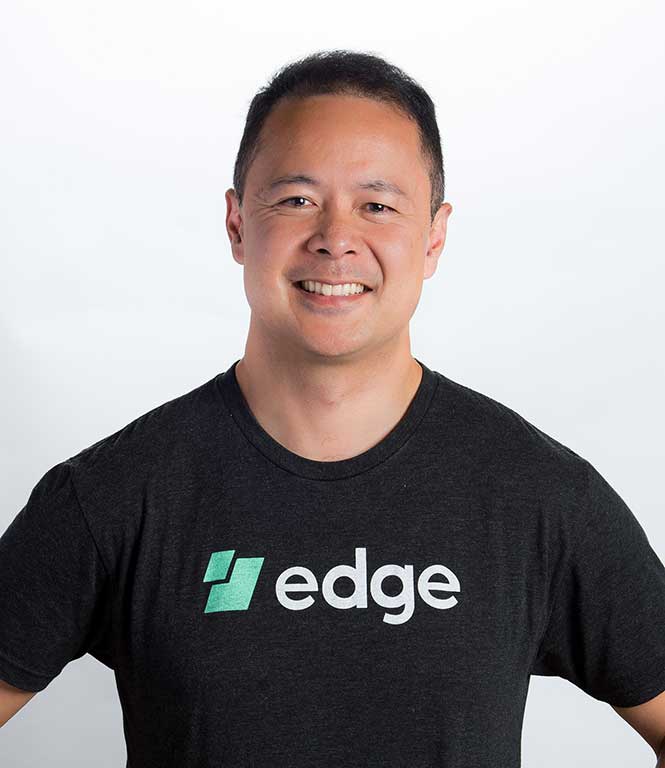
Paul Puey, co-founder of Edge (formerly AirBitz)
"Paul is a proud Electrical Engineering and Computer Science graduate of UC Berkeley with a wide range of technical skills from low-level 3D graphics engineering to development of custom web CMS systems, even before people knew what a CMS was. He held lead engineering positions with Nvidia and Chromatic Research, but most recently owned and operated several non-technical small businesses throughout California. There he learned the importance of the intersection of people, business, and technology.
Today, Paul aims to bring Bitcoin mainstream with software and products aimed at simplifying Bitcoin and making it insanely easy to send and secure this revolutionary currency while maintaining the highest level of privacy.
When not converting people to bitcoin you’ll likely find him climbing a rock in Joshua Tree or at a local climbing gym."
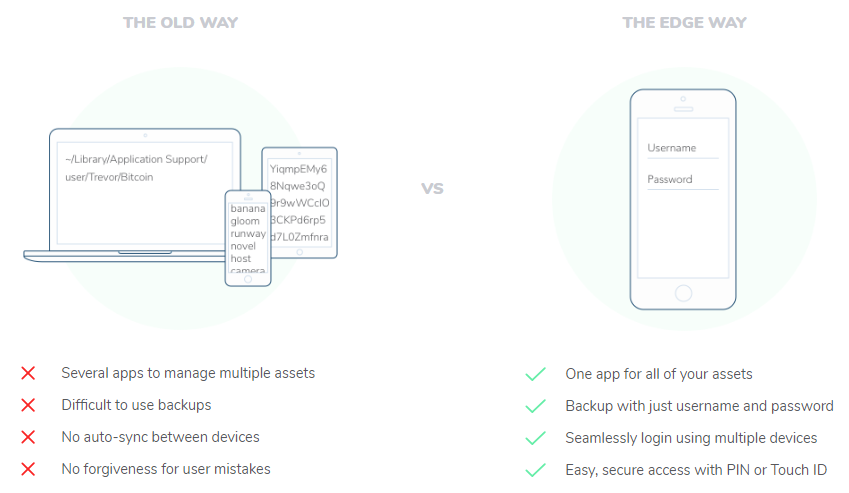
The unique selling proposition is Edge allows users to manage multiple wallets for multiple assets securely under a single sign-on (SSO) login (just like using Facebook or Google to sign up for a site).
Edge's philosophy is "security is our foundation, not a feature" as demonstrated by their client-side encryption which means data is encrypted from the device itself and before it ever touches Edge servers.
 Cryptocurrencies currently available on Edge
Cryptocurrencies currently available on Edge
We had a great time learning more about Paul's origin story, the creator of Edge (formerly AirBitz) and the vision of how to bridge Cryptocurrency use into the mainstream world.
After listening to this episode you will learn:
- Paul's beginnings in Silicon Valley at Nvidia working on Graphics Processor Units (GPUs)
- How Paul got out of balance with work which was a catalyst for shifting his health in a more positive direction
- The origin story of AirBitz and how it evolved into Edge as a rebrand
- Why we should stop trying to make security perfect and instead analyze the trade-offs
- How users get the benefit of security like SSL but for everyday Cryptocurrency usage
- Why Paul believes in usability and utility as much (if not moreso) than just ideology
- About the threat of centralized custodians and how counterparty risk and cold storage reduce usability
- How the architecture of centralized entities slow down transactions due to the lack of funds available in hot wallets
- How Edge saw the opportunity to open up its security architecture to other dApps (like Augur)
- Edge and why its the first use case of the Edge platform itself which can be used in many other
- What the Edge's of the network are and how the data generated there is secured
- How the communities of various cryptocurencies helped Edge integrate their tokens
For show notes and more please visit: LAB Radio
In this episode, we’re at the Beyond Blocks in Seoul (the "capital city"), Korea. Chris Groshong, CEO of CoinStructive, caught up with Jack Tan of Kronos Token, a platform aimed at allowed token holders to access to elite trading strategies through a built-in trading desk.

Kronos helps to bridge the gap between retail untrained investors and the elite 1% who have unfair access to the majority of global wealth, where they just get richer. Kronos disagrees with this premise.
To solve this problem, Kronos sources and nurtures elite investing and trading talent which opens up the skillsets and strategies of these teams to KRON holders.
In addition, Kronos leverages a variety of time-tested investment methodologies to battle unstable and volatile markets and pass the value to the users. This allows investors to benefit from enterprise trading strategies which help stabilize portfolios despite market conditions.
As stated on the Kronos website:
We are changing the rules once and for all. All KRON holders will have a chance to access the best strategies in quantitative trading and other investments within crypto. The mission of the KRONOS project is to:
- Attract, foster and retain the best trading talent globally
- Remove access barriers to the top investments
- Maximize resilience of the ecosystem through the intelligence of decentralized governance
Our strategies carry a range of risk and return profiles, but are generally uncorrelated from the market. This means they can profit even when asset prices are falling. We will begin with high-frequency market making and proprietary trading, but will quickly add teams to trade "smart index", statistical arbitrage, and discretionary small-cap strategies.
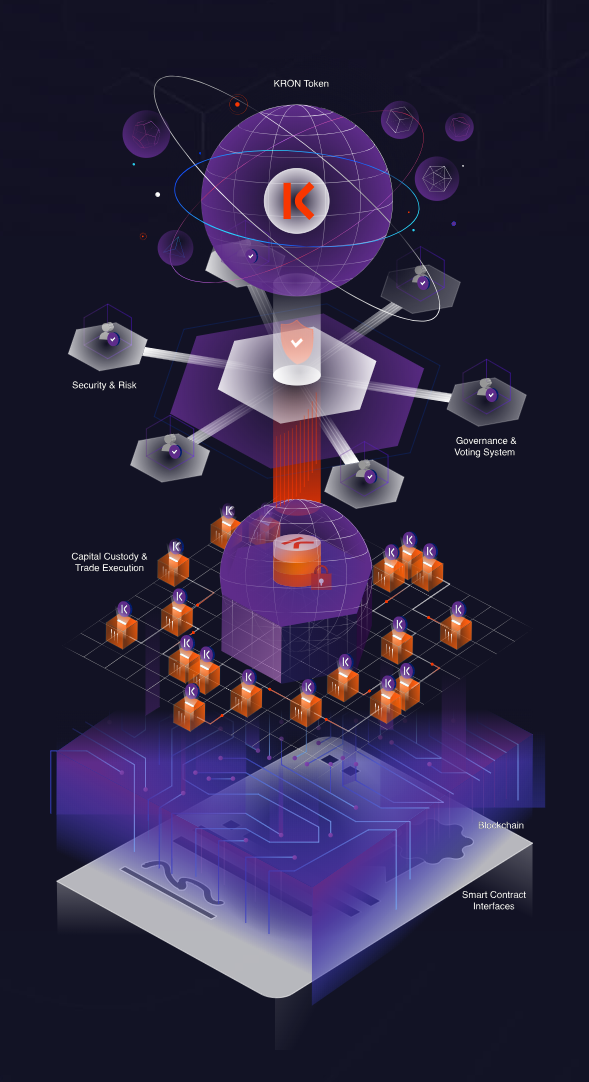 The Kronos token helps bring elite trading strategies to the average investor
The Kronos token helps bring elite trading strategies to the average investor
After listening to this episode you will learn:
- How Jack moved to the US when he was 7 with humble beginnings
- What nagging problem Kronos solves for investors
- The limited choices and options available to the average retail investor
- How Kronos provides access to liquidity, market making and trade execution
- Why Kronos structured their coin in Taipei, Taiwan with a focus on Asian markets
- An example of the use cases and stories from users of the platform
- The future outlook and vision of Kronos in 2-3 years
- How Kronos uses quantitative algorithms to drive intelligent trading 24/7/365 regardless of bull or bear markets
- Why Jack believes in thinking long-term and creating something bigger than yourself
For show notes and more please visit: LAB Radio
In this episode, we’re at the RISE conference at Asia's World City, Hong Kong. We caught up with a company called Bucket Technologies that aims to help us deal with the issues and costs of handling physical change.
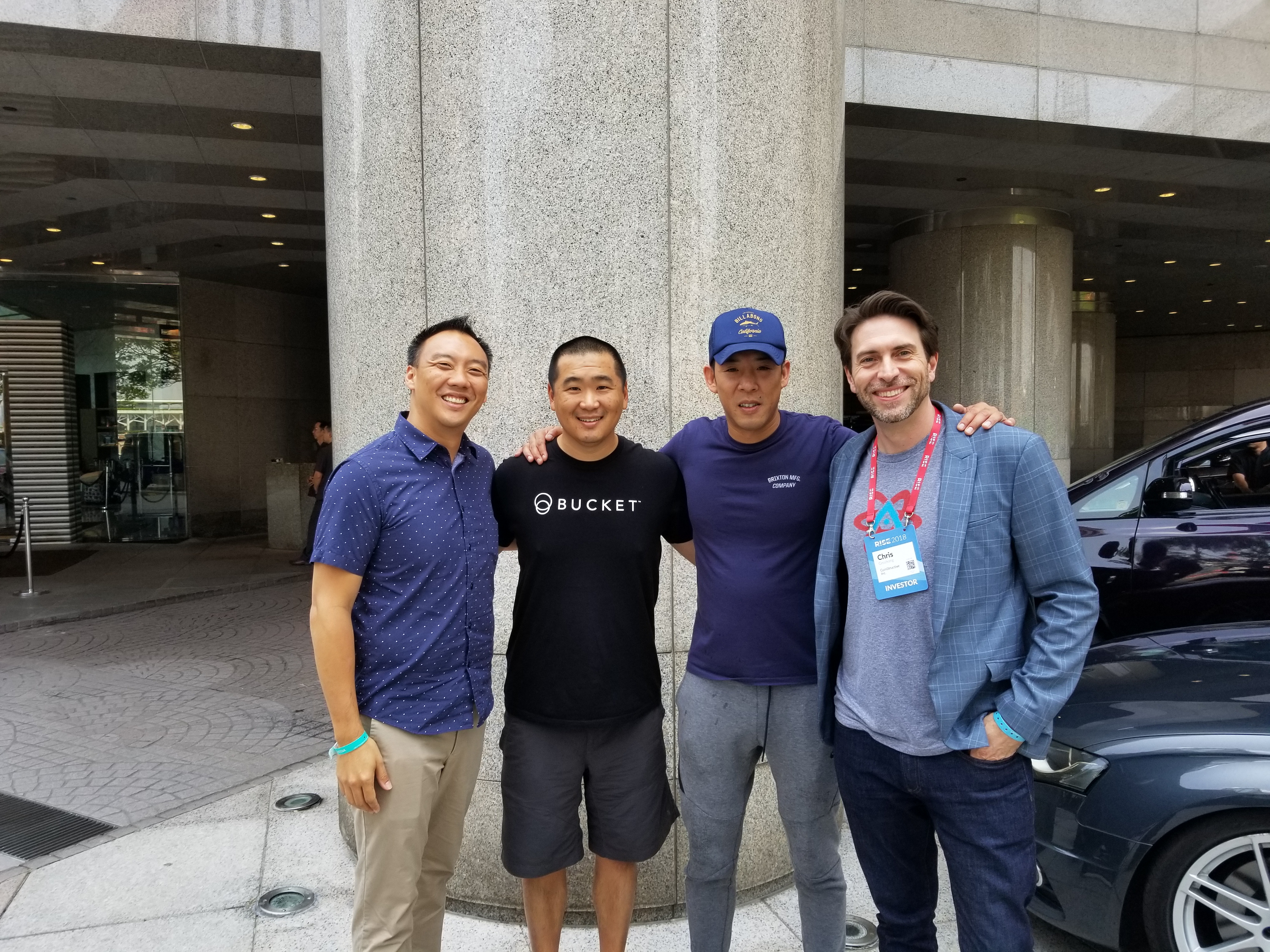 Francis Hwang, Daniel Kam, Mac Ling (left, Bucket Technologies) and Chris Groshong (right, CoinStructive Inc.)
Francis Hwang, Daniel Kam, Mac Ling (left, Bucket Technologies) and Chris Groshong (right, CoinStructive Inc.)
Bucket is a "digital piggy bank platform" which aims to bridge the worlds of coinless cash transactions. Bucket alleviates the stress and significant costs associated with the production, distribution and handling of physical coins.
Their mission is "to accelerate humanity’s transition to a digital economy" as the world first global aggregator of coin currency for consumers and enterprise users.
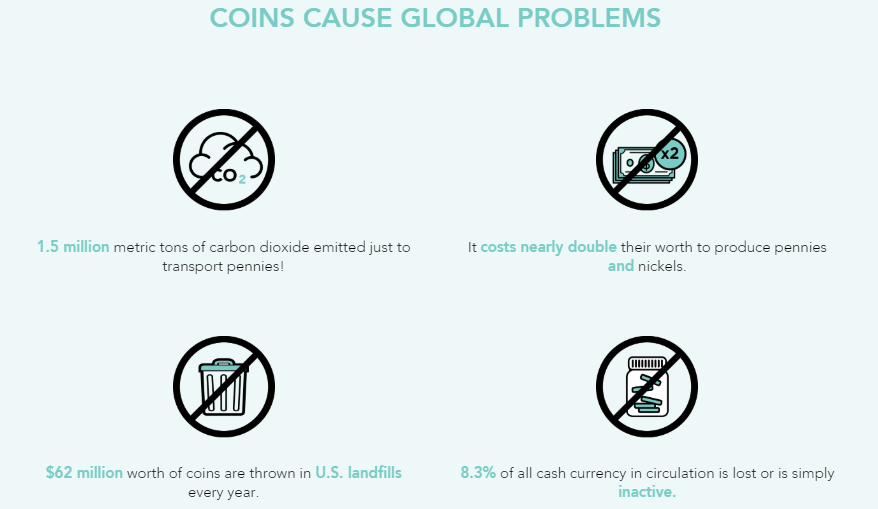
Our guests for today's show from the Bucket Team include:

Francis Hwang, CEO of Bucket Technologies
Francis has over a decade of experience in creating, launching, and managing successful businesses. Having always gravitated towards enterprises and ideas that question and disrupt the status quo, it was a natural step for Francis to start Bucket Technologies. Coming up with the concept for Bucket over 10 years ago, Francis finally set aside other ventures to focus and commit to his mission of eliminating coins and alleviating the environmental and governmental stresses from the production, distribution, and management of coin currency.
Francis recently moved to Bentonville, Arkansas and when he isn’t working or travelling for Bucket you will find him off-roading with his wife Kristine in the Ozarks.
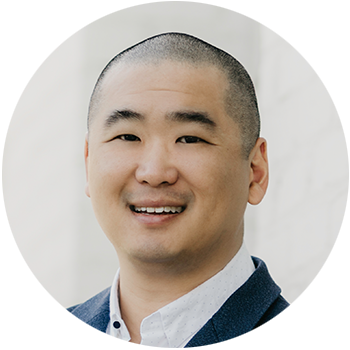
Daniel Kim, President and COO
Daniel is a successful entrepreneur who has launched and built several businesses in the technology, managed services, manufacturing, and hospitality/F&B industries. He has over 20 years of B2B/B2C sales and marketing experience within various commercial sectors including cloud-commerce, telecommunications, and graphic arts. Daniel regularly speaks and networks with leading companies and organizations on topics such as leadership, innovation, branding, and operations management.
When Daniel is not working he enjoys spending time with his wife and 3 girls, cooking or going after big fish (literally, not metaphorically).

Mac Ling, Managing Director, Asia
Mac has over 15 years of technology and marketing leadership experience in corporations, SMEs, and startups, in both the United States and Asia. His personal mission of leaving this world a better place than he found it made joining the Bucket team an easy fit. His ability to take technical solutions and create simple value propositions for end users has served him well in both B2B and B2C environments and is committed to Bucket’s mission of eliminating coins and alleviating the retailer and consumer stresses from the use and management of physical coin currency.
Mac’s past experience includes leading Boost Mobile’s Digital Media business, heading up marketing and service delivery for i-Admin, Asia’s premier payroll outsourcing provider. Mac received his B.S. in Cognitive Science from UC San Diego, and an M.B.A. from the Darden School at the University of Virginia. He is also a certified Marshall Goldsmith executive coach.

After listening to this episode you will learn:
-
The origin story of Bucket and how the founders envisioned the company
-
What Bucket is and what problem they solve
-
The extraordinary cost associated of dealing with loose change
-
How Bucket made a critical partnership deal with a US bank (same one Square uses) to help structure the stable coin and adds liquidity
-
The current Point of Sale system have never been upgraded and how they are going to add a bucket button on a POS system
- Why they worry that people will not learn from history and repeat previous mistakes
For show notes and more: LAB Radio
In this episode, we’re in the thick of Korea Blockchain week for our roadshow and we wanted to introduce you to one of the top movers, shakers and connectors, named Andrew Lee.
 Andrew Lee (pictured left) and Chris Groshong (pictured right)
Andrew Lee (pictured left) and Chris Groshong (pictured right)
Andrew has an MBA and Bachelor’s degree in Finance, Accounting and Economics from The Wharton School | University of Pennsylvania. He's built an extensive professional and personal network worldwide, having spent 15 years in Asia and the rest in the U.S.
In this episode, we’re in the thick of Korea Blockchain week for our roadshow and we wanted to introduce you to one of the top movers, shakers and connectors, named Andrew Lee.
 Andrew Lee (pictured left) and Chris Groshong (pictured right)
Andrew Lee (pictured left) and Chris Groshong (pictured right)
Andrew has an MBA and Bachelor’s degree in Finance, Accounting and Economics from The Wharton School | University of Pennsylvania. He's built an extensive professional and personal network worldwide, having spent 15 years in Asia and the rest in the U.S.
As a venture capitalist, entrepreneur and investment banker, Andrew worked at storied institutions such as Apple, a multi-billion dollar Tiger hedge fund, Merrill Lynch, Lehman Brothers and Enron. As Andrew hosted multiple upscale events, his clients were multi-billionaires, and his sponsors were Diageo, Uber, Red Bull, Ultra Music Festival and New Face Models.
"As a global organization, FOMO MASTERNODE operates as a red carpet, curated events company and crypto fund, involving some of the biggest names in crypto worldwide. The network and participants are comprised of global & local media, influencers, market makers, exchanges, investment funds, lawyers, syndicates and ICOs ... represented from all parts of the world: Shanghai, Silicon Valley, Beijing, New York City, Taipei, Singapore, London, Dubai, Tokyo, Thailand, Israel, Hong Kong, etc.
The main driver of the company are the events, and the fund is just a by-product given all the publicity and access.
What I do is an art -- it's an indirect and subtle way of marketing, fundraising and building brand awareness, globally. These all go hand-in-hand, and if executed well, the outcome is immensely synergistic."
~Andrew Lee, founder of FOMO MASTERNODE
Sponsors for the July 14th, 2018 FOMO MASTERNODE event included:
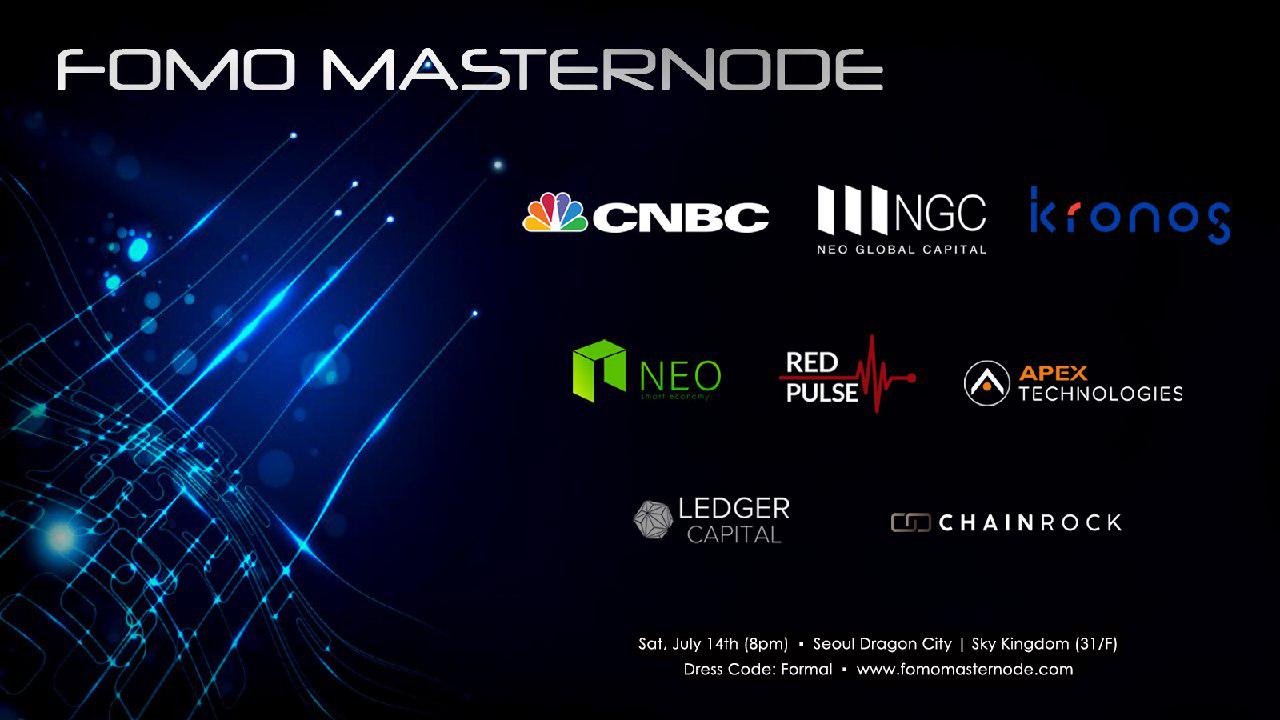
After listening to this episode you will learn:
- About Andrew’s background as an investment banker and VIP hospitality host for billionaires around the world
- That macroeconomics was the initial gateway into Andrew’s transition into finance, and eventually Wall Street
- FOMO MASTERNODE’s story and how it is helping build the ecosystem in Asia and the United States
- How he came up with the idea and built a global brand from scratch
- His prior history organizing & hosting events for VIPs, billionaires, hedge fund & private equity CEOs, venture-backed startups How this was the genesis to FOMO MASTERNODE
- What Andrew does in his personal time when not working
- Warnings about not over-doing things as Andrew did trading Bitcoin Futures
For show notes and more please visit: LAB Radio
Today we are exploring a fascinating intersection of disciplines, Cryptocurrency and Economics, called Cryptoeconomics (aka Cryptonomics or Tokenomics).

To help dig deeper into these concepts we brought on Stephanie Hurder, a Harvard educated PhD economist, who is also a founding economist of the Prysm Group, a consulting firm focused on economic and governance.
Stephanie is a Harvard-educated economist specializing in human capital, market design, and the future of work. While at the Boston Consulting Groups, Stephanie worked with Fortune 50 corporations and global NGOs to build effective organizations that are prepared for the future of work. She was recognized as a firm-wide expert on organizational effectiveness and design and co-authored multiple publications on these topics.
Stephanie has held research positions at MIT, Microsoft Research, and Merrill Lynch, and given invited seminars to faculty at half a dozen top research universities across the country. She holds a PhD in business economics, an AM in economics, and an AB in mathematics from Harvard University.
Stephanie now works with the Prysm group as a founding economist:

"We are a blockchain economics & governance design firm led by PhD-level economists disciplined by the world’s top universities, specializing in blockchain and cryptocurrency contract theory and market design. We use a first principles-based structured process in reaching a customized solution for your distributed ledger database or smart contract enabled enterprise, concentrating on: Community Governance, Consensus Governance, Token Structure, Coin & Token Sale, and Market Structure."
After listening to this episode you will learn:
- What Economists study and do
- What is the Prisoner's Dilemma? (how it applies to cryptoeconomics)
- What Cryptoeconomics is? (The difference between Protocol and dApp, Token Curated Registries cryptoeconomics)
- What tokenization is (and how it connects with economics)
- About Stephanie's arguments in her article, the Economics of Tokenization
- Best practices, fundamental principles behind "token economics"
- How Blockchains are like mini-economies (Economic systems designed in code)
- Use cases, protocols and projects that most excites her
For show notes and more please visit: LAB Radio
In today's episodes, we are going to explore some of the complexities of a Security vs. Utility token which are fresh on our minds after the recent SEC announcement about Ether and Bitcoin not being considered securities.
William Hinman, the SEC's Director of Corporate Finance made the announcement:
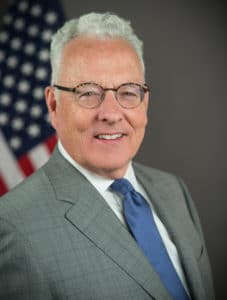
“Strictly speaking the token, the coin, whatever the digital information packet is being called all by itself, we don’t think is a security. Just as oranges in the Howey case were not securities. Essential to determining whether a security is being offered, however, is how it’s being sold and a reasonable expectation of purchasers.
When someone buys a housing unit to live in it’s probably not a security but under certain circumstances, the same asset could be offered and sold in a way that could cause investors to have a reasonable expectation of profits based on the efforts of others.
If the housing unit is offered with a management contract or other services where purchases are encouraged to invest rather than reside, it could be a security. Case law tells us that,” Hinman explained during his speech.
Securities are the talk of the regulator town and perhaps less so in the Cryptosphere's now that we have a solidified answer. However, many other projects have uncertain futures as to their designation which may bring pause to would be Blockchain empire builders.

The Street, a finance-focused media outlet, defines securities as follows:
"A simple definition of a security is any proof of ownership or debt that has been assigned a value and may be sold. (Today, evidence of ownership is likely to be a computer file, while once it was a written piece of paper.) For the holder, a security represents an investment as an owner, creditor or rights to ownership on which the person hopes to gain profit. Examples are stocks, bonds and options.
The Securities and Exchange Act of 1934 provides this more complicated definition, but you might want to grab a cup of coffee: "The term 'security' means any note, stock, treasury stock, bond, debenture, certificate of interest or participation in any profit-sharing agreement or in any oil, gas, or other mineral royalty or lease, any collateral-trust certificate, preorganization certificate or subscription, transferable share, investment contract, voting-trust certificate, certificate of deposit, for a security, any put, call, straddle, option, or privilege on any security, certificate of deposit, or group or index of securities..."
To help us demystify this fascinating (yet complex) situation of Securities vs. Utility tokens we brought in Joe Ciccolo, an expert in building BSA/AML programs as well as over 10 years of banking compliance.
Joe founded BitAML, a regulatory compliance advisory group, to help Blockchain startups and innovators to remain above board in a rapidly shifting (and uncertain) regulatory landscape.
For show notes and more visit: LAB Radio
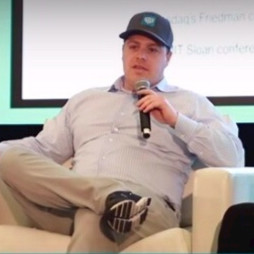
David Bleznak is the founder and CEO of Totle, a Cryptocurrency Portfolio Manager and Decentralized Exchange (DEX) aggregator. David grew up in Michigan with a background in real estate and business management.
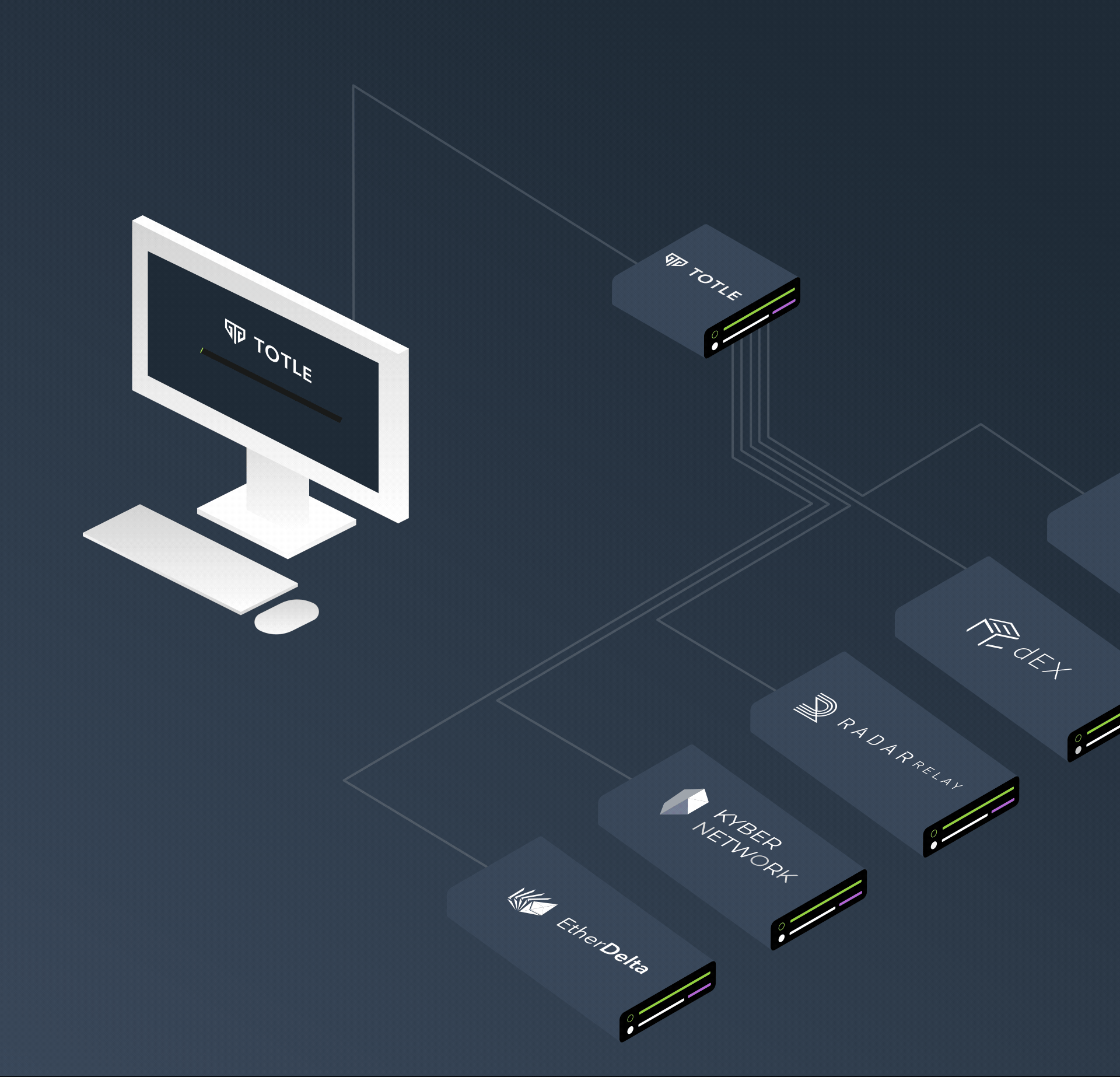 Totle searches for the best prices across a variety of exchanges and executes on your behalf
Totle searches for the best prices across a variety of exchanges and executes on your behalf
Totle is a DEX Aggregator that pools the liquidity of the top ERC-20 token decentralized exchanges (DEX) by finding and executing a buy or sell at the best price in real time.

After listening to this episode you will learn:
- David's background and how he got started
- What a CEX is and how do they work
- How CEXs maintain custody of funds AND price feeds
- How this is a conflict of interest for CEXs and why
- What a DEX is and how it differs from a CEX
- What Totle does compare to IDEX or Ether Delta
- Why they built on Ethereum (ERC-20 supported)
- David's insights and takeaways about Blockchain and DEX technology
For show notes and more please visit: LAB Radio

Kelley Weaver is a young entrepreneur and founder of Melrose PR, a leading crypto and blockchain public relations and content marketing agency based in Los Angeles, California.
Kelley has been featured and quoted by the LA Times, Forbes, Entrepreneur Magazine, Inc, LA Business Journal, Business Rockstars, and many more.
Kelley routinely writes thought leadership pieces about blockchain for Forbes and The Huffington Post. She is the host of Crypto Token Talk, a podcast for those looking to enter the new frontier of blockchain technology and learn “Crypto 101” from leading industry experts, launching in January 2018.
It serves as an entertaining on-ramp and newbie-friendly gateway to learning resources related to the world of cryptocurrency.
My @cryptotokentalk podcast interview with the legendary @TimDraper is live https://t.co/SvBB8LFe9S - learn why he believes $bitcoin is the future! Huge thanks Tim @drapervc for your wealth of insight & knowledge. #cryptotokentalk #TimDraper #askCryptoKelley #blockchain #crypto pic.twitter.com/HDRYLyijFB
— Kelley Weaver (@cryptokelley) February 24, 2018
Melrose PR is a public relations & creative marketing agency focused on technological and storytelling innovation for the blockchain technology and crypto (digital asset) industries.
Melrose PR feels a responsibility to take leadership, silence the skeptics, and ensure that the message is strong and clear – blockchain is the future of technology, business, and the world. We work with enterprise-level solution providers as well as blockchain startups, helping them craft cohesive messaging and generating awareness through top-tier media placements.

After listening to this episode you will learn:
- About Kelley's International background and path to entrepreneurship and eventually into the Blockchain space
- How Kelley is a Shark Tank Alumni from her invention, Pursecase
- What it's like to work with Lori Greiner from Shark Tank
- Why she created Melrose PR and the value provided to clients
- How the process works to get media coverage
- Best practices ICOs and other projects can keep in mind when pitching to the news media
- About Kelley's show Crypto Token Talk
- Insights and takeaways gained to date from Blockchain technology
For show notes and more please visit: LAB Radio

"A high energy, creative and resourceful problem solver who enjoys working in teams and engaging with other individuals. A quick learner with demonstrated initiative and strong analytical skills." ~CJ Smith, co-founder of CryptoBlockCon
CJ previously worked as a business analyst and digital marketing professional. Now he's an Entrepreneur, event organizer and co-founder of CryptoBlockCon, a global Blockchain conference series.
After listening to this episode you will learn:
- Where CJ is from and how he got started
- How CJ got into event management and then the Blockchain niche
- Things CJ likes and dislikes about different events and how he improves on that
- Examples of what a good event looks like
- What Blockchain projects and use cases CJ is most excited about
For show notes and more please visit: LAB Radio
